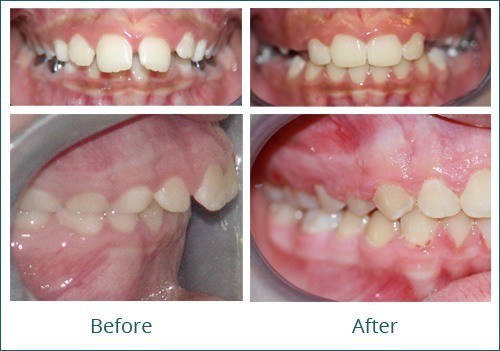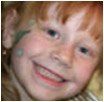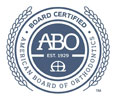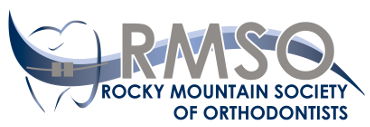Overjet
Excessive Overjet ("Buck Teeth")

Excessive over-jet is usually seen as protruded upper teeth with retruded lower jaw. it can be genetic, it can be from habits like sucking a finger or sucking the lower lip, or it can be from an under-developed lower jaw (mandibular hypoplasia). In most cases, early treatment is needed to correct whatever is causing the growth problem early enough so there is adequate growth remaining to catch the lower jaw back up with the position of the upper jaw/teeth before the remaining teeth erupt and growth stops (age 13 for girls, 14 for boys). If excessive overjet persists up to age 13/14, it may not be possible to fully correct and even partial correction could require removal of permanent teeth even to mask the problem. Ultimately, severe cases left untreated into the teens will require jaw surgery for full correction.
Reasons why excessive overjet should be corrected include:
- Prevent development of a severe deepbite
- Reduce risk of trauma to front/protruded teeth
- Return upper teeth into ideal function
- Correction of skeletal problems reduces risks of TMD (jaw pain) and Sleep Apnea while also restoring function and esthetics
Orthodontic correction of overjet
An overjet correction procedure is dependent on the age of the patient. For adults who have stopped growing, extreme cases can be corrected by extracting the teeth, or through surgical intervention to push the bottom jaw forward. For young patients that are still growing, bone balance can be achieved through modification of its growth, with the use of elastics and/or any appropriate intra-oral device. The earlier the correction, the better and more stable the result. Patients should be screened at age 6 to determine if they have a Class II excessive overjet facial pattern. It is visible to the orthodontist as soon as the permanent 1st molars erupt (the ”6 year” molars). Class II malocclusion will remain Class II 100% of the time unless or until corrected.





